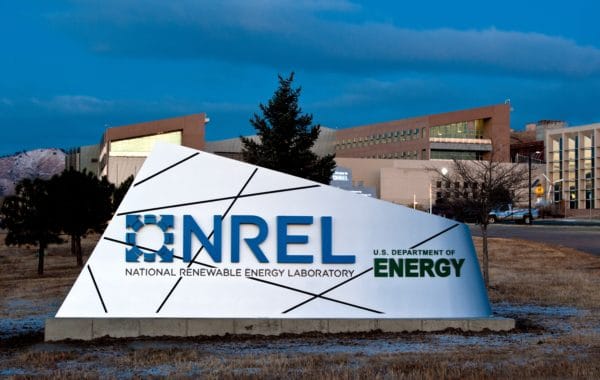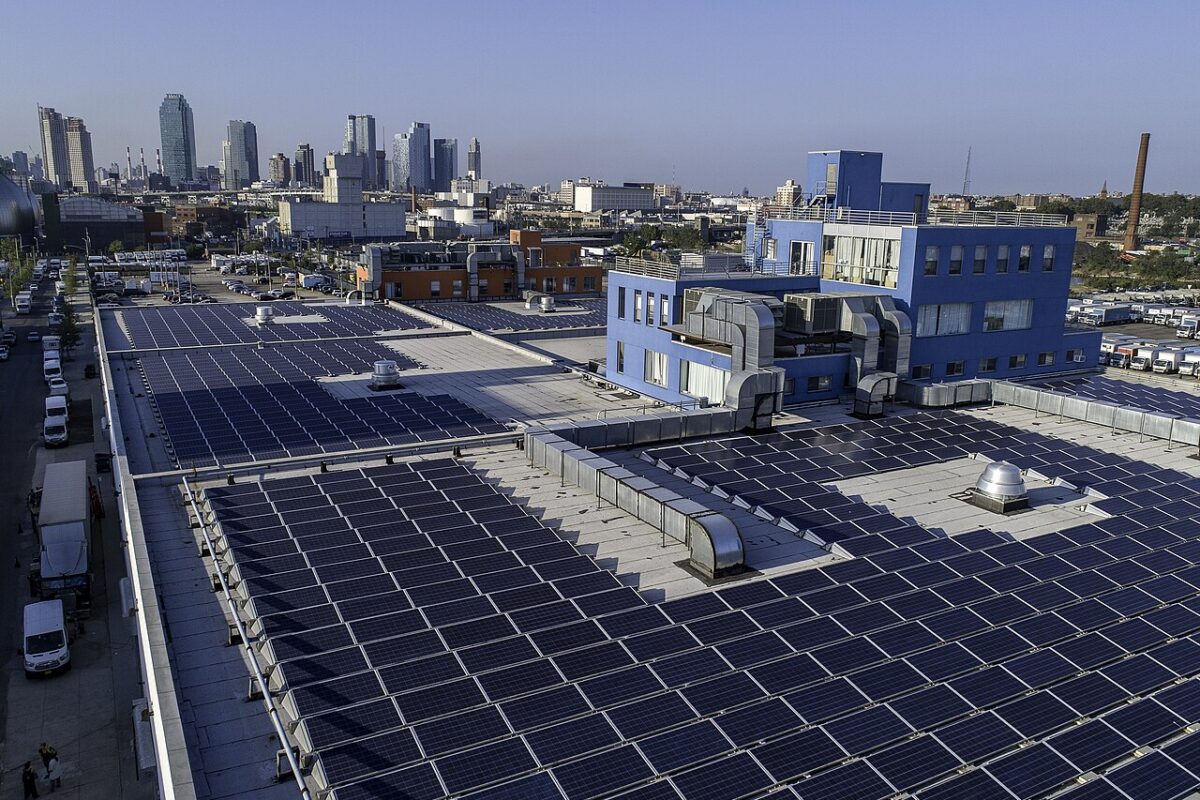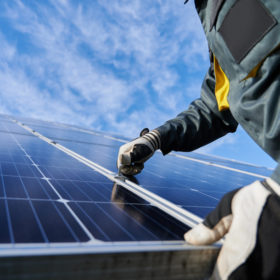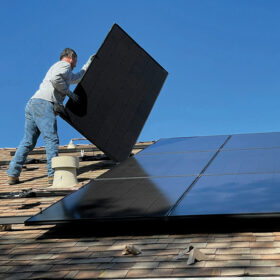A landmark study says that Los Angeles’ goal of reaching a 100% renewable, reliable, and resilient grid can be met as early as 2035.
Doing so will require adding new solar, batteries, wind, and transmission, along with operational practices that make more efficient use of those assets. The study did not address specific costs, but said that economic impacts to the city would be “small relative to the overall size” of LA’s economy.
The three-year study, titled Los Angeles 100% Renewable Energy Study (LA100), was done by the National Renewable Energy Laboratory (NREL) for the Los Angeles Department of Water and Power (LADWP), the country’s largest municipal utility. NREL researchers combined economic, energy, and public health models to produce more than 100 million simulations and identify a series of “pathways” that the study said will lead the utility to 100% renewable energy.Each pathway included anywhere from 73%-92% of renewable energy generation from solar and wind resources. The study said that achieving this range would be enabled by deploying battery storage technologies and new or upgraded transmission lines that would allow LADWP to reserve and dispatch power to meet high demand periods.
To meet remaining demand, LADWP will need to bring “more nascent forms” of clean energy generation into the mix. The report said that infrastructure to produce and store green hydrogen power is a leading option. It left room for other forms of energy generation that will need to be developed to help store and and deliver power during high demand periods.

Image: NREL/Dennis Schroeder
The study said that achieving the city’s goal of 100% renewable energy by 2035 instead of 2045 means that LADWP will need to make the necessary investments more quickly. “This results in earlier accumulation of debt, ultimately leading to greater costs” over the LA100 timeframe, the study said.
Among other findings in LA100:
- All LA100 scenarios include “significant” deployment of renewable and zero-carbon energy by 2035. These sources account for 84%–100% of energy and a decline of 76%–100% GHG emissions from power plant operations in 2035 compared to 2020, depending on the scenario. Each of the scenarios builds new solar, batteries, wind, and transmission, coupled with operational practices that make more efficient use of these investments.
- By 2045, electricity demand (both annual consumption and peak demand) is likely to grow. High levels of energy efficiency can offset this growth in the buildings sector due to a hotter climate, population growth, and electrification. The study pointed to electrification of the transportation sector as a primary driver of overall growth in electricity demand.
- Also by 2045, customer incentives are likely to drive 3,000–4,000 MW of rooftop solar, including up to a third of customers in existing single-family homes. LADWP might also deploy an additional 300–1,000 MW of non-rooftop solar in the Los Angeles Basin.
The study said that LADWP’s distribution grid can manage the expected growth in local solar, along with growth in electricity demand. It said that almost all parts of the city’s distribution grid will need upgrades. Even so, the LA100 study estimated that, after correcting deferred maintenance on the existing system, a “modest number of equipment upgrades” would be needed. It said that upgrade costs would represent a “small fraction” of the total cost of the clean energy transition.
Vehicle and building electrification would lead to “substantial improvements” in air quality and related public health benefits. The study said that realizing these benefits would depend on achieving high energy efficiency and electrification, “independent of any particular renewable energy pathway for the power sector.”
Strong start to 2021 for solar
A review by the SUN DAY Campaign of data from the Federal Energy Regulatory Commission (FERC) and the U.S. Energy Information Administration (EIA) said that solar and wind had a strong start in 2021.
SUN DAY reported that utility-scale solar thermal and photovoltaic (PV) plants tracked by EIA produced 23.1% more electricity in January 2021 than they did a year earlier. Estimated small-scale solar rose by 18.8%. Combined, solar grew 21.7% and provided 2.4% of the nation’s electrical output.
Wind generation grew by 6.6% in January, compared to a year earlier, and provided 8.6% of U.S. electrical output. Together, wind and solar rose by 9.5% and accounted for a bit more than 11.0% of net generation in January.
Meanwhile, FERC’s latest monthly “Energy Infrastructure Update” report found that solar and wind provided all of the new electrical generating capacity added in January. Twenty-seven units of utility-scale solar provided 724 MW. Two units of wind added 554 MW.
The SUN DAY report said that renewable energy sources collectively now account for 24.30% of the nation’s total available installed generating capacity and continue to expand their lead over coal (19.43%) and nuclear power (8.50%).
Battery storage growth
The Energy Information Administration projects that up to 59 GW of battery storage will serve the power grid in 2050. Falling battery costs, growth in non-dispatchable renewables, and applying the Investment Tax Credit to co-located storage systems were key assumptions in its projections.
The projection also assumed that battery storage either would be built on a standalone basis to charge from the power grid, or as a co-located system that charges from an onsite solar photovoltaic power generator.
This content is protected by copyright and may not be reused. If you want to cooperate with us and would like to reuse some of our content, please contact: editors@pv-magazine.com.









From the EIA daily electric generation data that on March 22, wind generated more electricity than coal. And Wind+hydro+solar generated more electricity than NG.
My projection for battery storage is that EIA will be off by at least 10 years and more than likely 20 on their projection.